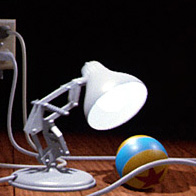Here are the screenshots I made for the talk I previously mentioned. They show how the rendering evolves through the choice of shading. The setup consist of a close yellowish punctual light on the up right, and a distant red-ish punctual light on the back left, as well as a dim blue ambient. The objects only differ by the specular exponent, which jumps by a times two factor from one object to the next one, left to right.

One light, Lambert diffuse only.
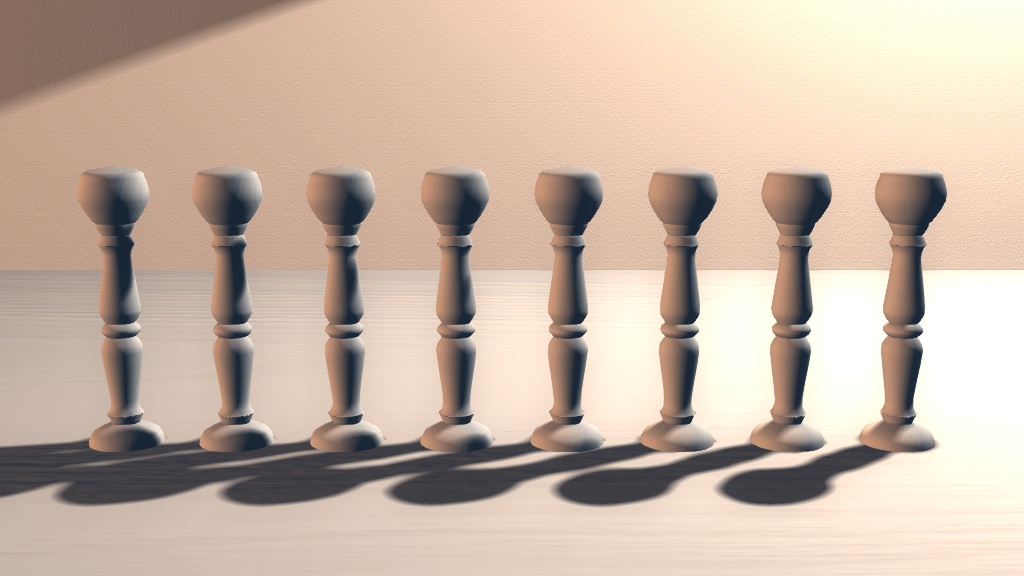
Two lights, Lambert diffuse only, with variance shadow map.

Two lights, Lambert diffuse only, with albedo.

Two lights, diffuse and Phong specular. Notice the color on the left.

One light, Phong specular only. Notice the discontinuity on the left.
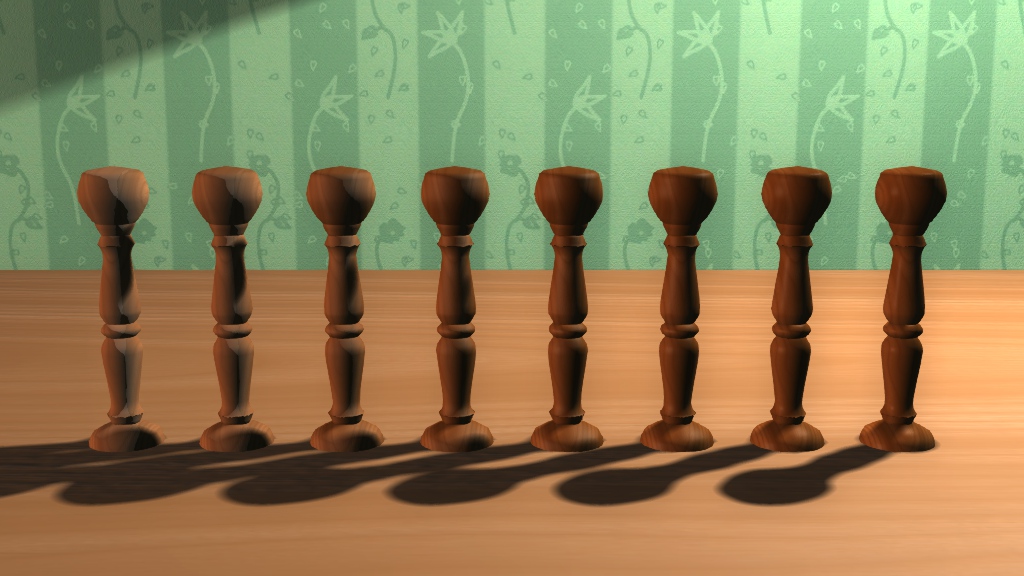
Two lights, diffuse and Blinn-Phong specular.

One light, Blinn-Phong specular only. Notice the absence of discontinuity.
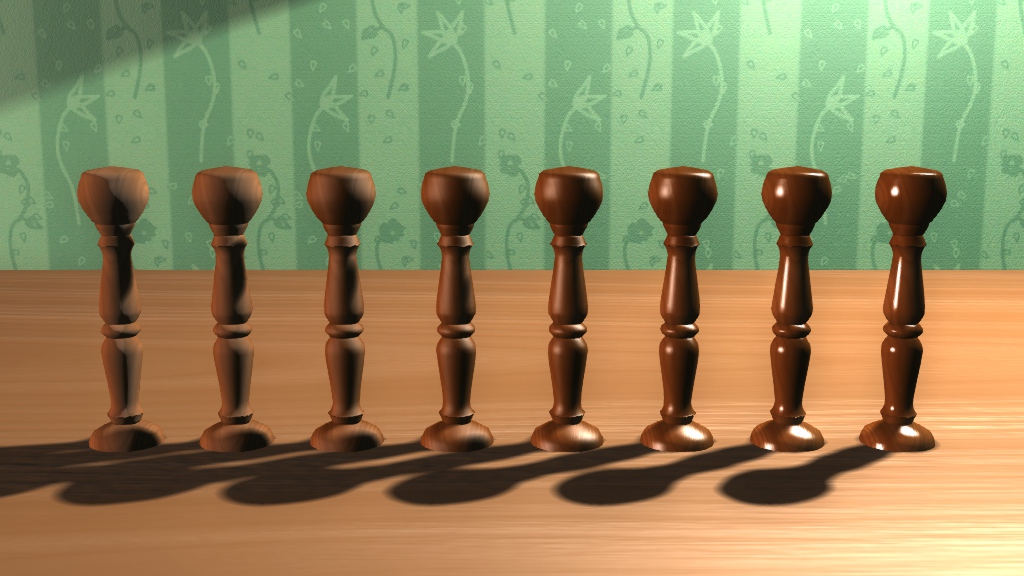
Two lights, diffuse and normalized Phong specular. Notice the highlight intensity.
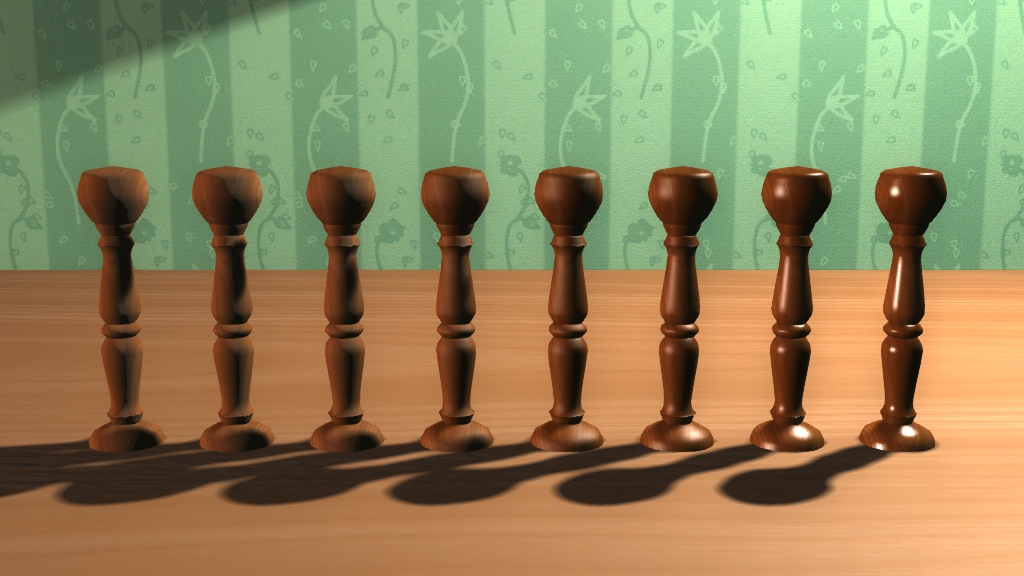
Two lights, diffuse and normalized Blinn-Phong specular.
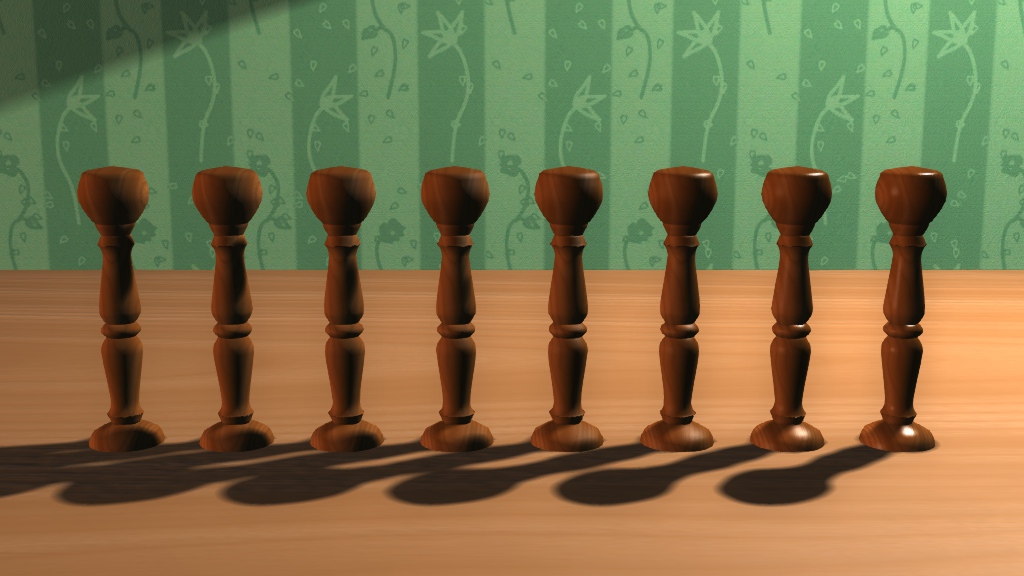
Two lights, diffuse and normalized Blinn-Phong specular, Fresnel term with Schlick
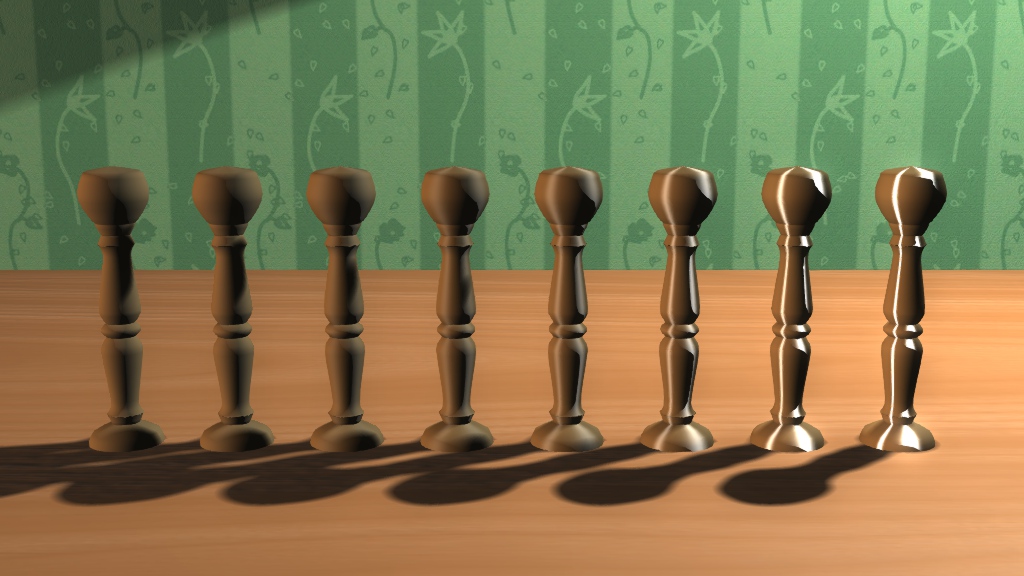
Two lights, Heidrich-Seidel anisotropic specular.
Next steps: getting used to the Fresnel version, experimenting with the exponent as a texture lookup, and normalizing the Heidrich-Seibel specular.

